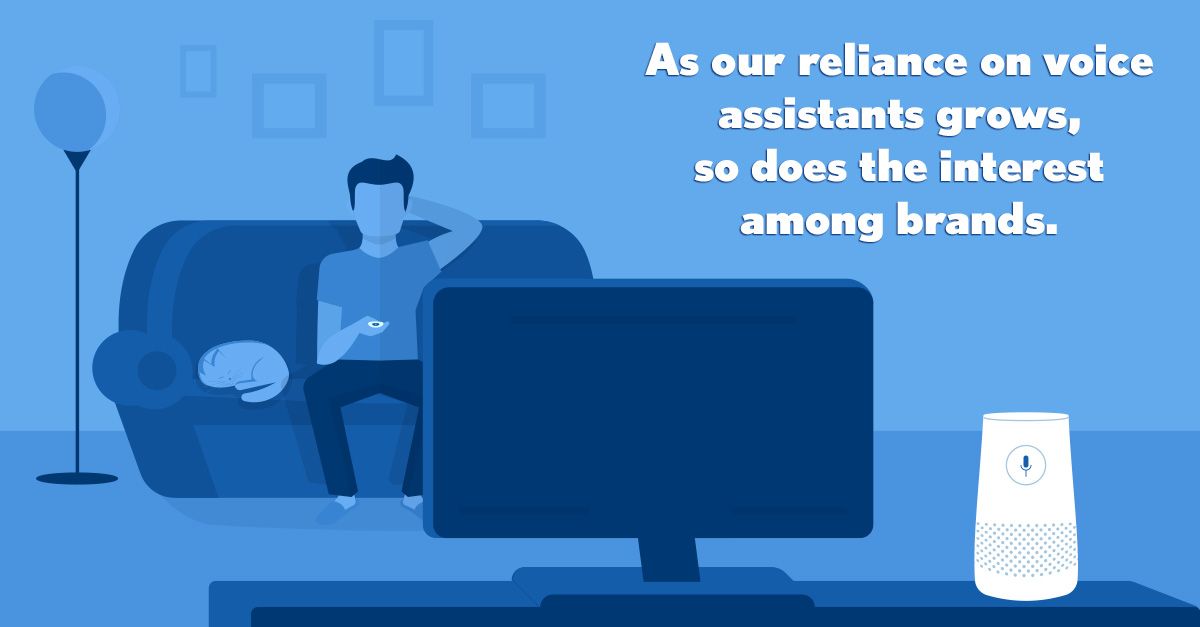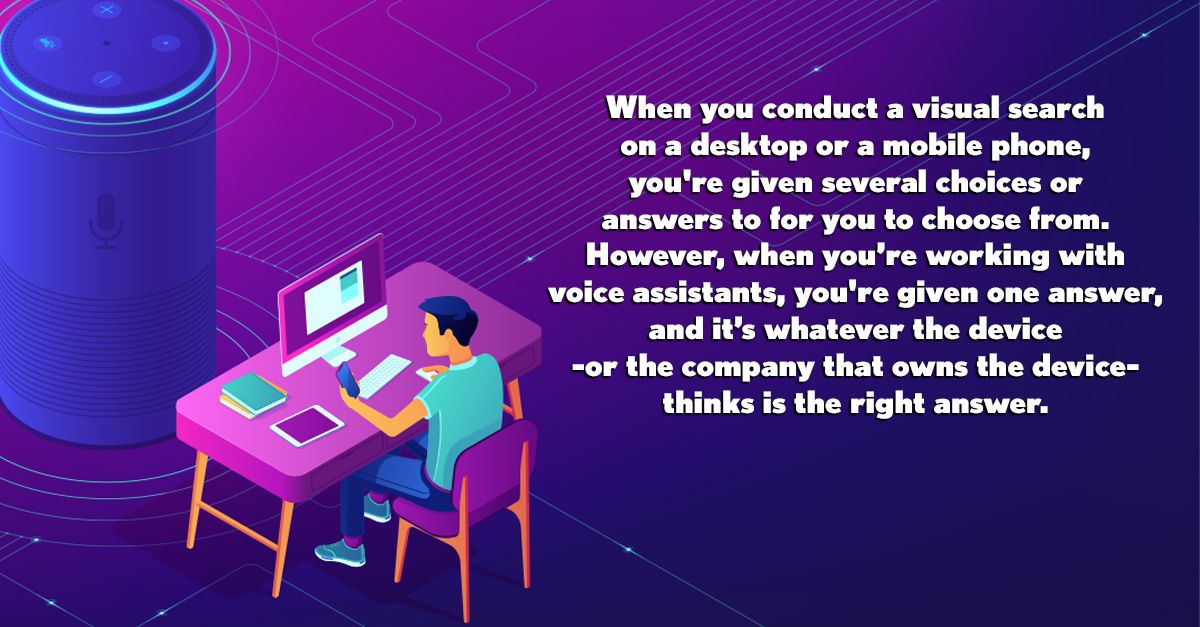
As all marketers know, there are two key metrics that are near and dear to their bottom lines — reach and frequency. Reach is a result of the proliferation of smart speakers (otherwise known as voice assistants), and the frequency of use translates into regular consumer engagement.
The vast world of marketing is still trying to determine how to optimize for this new technology. In the interim, here are some statistics about what we’re already experiencing with voice search and how it’s affecting the market.
As of the summer of 2018:
- One in six Americans own a smart speaker
- December of 2017 saw ten million units of Alexa
- 40% of adults now use voice search at least once per day
- By 2020, 50% of all searches will be voice searches
- Google’s IA read nearly 3,000 romance novels in order to improve its conversational search capabilities
- In 2017, voice commerce was a $1.8 billion retail segment in the U.S.
- 72% of smart speaker owners say that their devices are used as part of their daily routine

You may know a few of these digital voice assistants. They have names like Alexa, Siri, Bixby, Cortana and Google. There are, however, new voice assistants continually appearing on the market. Brands such as Progressive, Domino’s, National Geographic and the Food Network have all developed voice apps, as voice assistants represent a whole new channel for reaching and engaging consumers.
We humans are becoming rather needy creatures of the future. We seem to be way more comfortable these days as we speak to our personal smart speakers. Sending messages, playing music, shopping, and searching answers to a broad range of questions are just a few of the things for which most people utilize their voice assistants.

Now here is the crux of the message to our many marketing friends: As our reliance on voice assistants grows, so does the interest among brands. Companies want to know how to best utilize these new channels of communication to interact with their target audiences and improve brand recognition in personal and seamless ways.
This whole voice assistant thing is new to the world. It will be the cause of brands to rethink how they design their campaigns. They’ll have to work harder to make brand interactions relevant and worthwhile. Now, best practices are still developing and evolving, but eMarketer’s latest report, Marketing Beyond the Screen: Using Voice Technology to Boost Brand Engagement, dives further into these market dynamics and introduces some concrete steps for getting started with voice control.

One of the biggest changes is that this voice-first technology compels advertisers to create vocal interactions without screens or keyboards. When you conduct a visual search on a desktop or a mobile phone, you’re given several choices or answers to for you to choose from. However, when you’re working with voice assistants, you’re given one answer, and it’s whatever the device—or the company that owns the device—thinks is the right answer.
In addition, we still aren’t able to buy sponsored ads or keywords in order to hopefully become that “one answer.” Advertisers must optimize content using trial and error, and to attempt an organic appearance in position zero (the “answer box” in a Google search).
It’s now up to those of us in the industry to determine a palpable use for this technology. How important can we become in the daily routines and habits of voice tech users? How can we leverage this new landscape on the technology horizon? We may not yet know what the next five years will look like for marketers, but we do know that if there’s an opportunity to capture reach and frequency, we’ll do it.




